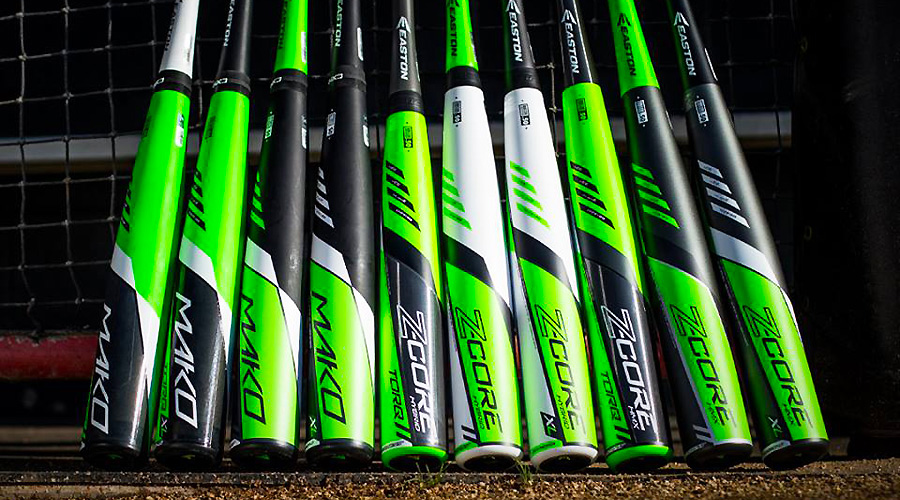By Eric Smith
A baseball bat rule change that USA Baseball issued in 2015 and which organizations such as Little League International adopted in January of last year helped manufacturers’ sales of bats surge 18.9 percent in 2018, according to recent wholesale data compiled by the Sports & Fitness Industry Association.
That skyrocketing growth headlined SFIA’s 2019 Manufacturers’ Sales Report, released earlier this month. The report, which measures U.S. wholesale revenues, showed that the overall sports and fitness products industry grew 2.3 percent in 2018 to $92.3 billion.
The SFIA report includes four categories, all of which experienced a sales increase, albeit in the low- to mid-single digits: Sports Equipment grew 0.8 percent $25.1 billion, Fitness Equipment grew 3.6 percent to $5.4 billion, Apparel grew 1.2 percent to $36.6 billion and Footwear grew 4.6 percent to $16.6 billion.
“Last year’s performance reflects a challenging market environment, where it’s more about the market share than it is about industry growth,” said SFIA President and CEO Tom Cove. “As an industry, we must understand the critical importance of increased sports and fitness participation, as a long-term strategy to fortify the foundation of our industry.”
The bump in baseball bat sales was nice but not sustainable. While sales of bats totaled $216.9 million, up from $182.4 million in 2017, that was driven primarily by a new USA Baseball bat standard that basically forced parents of players in Little League and other youth baseball organizations to buy new bats for their kids.
In 2015, Little League announced the league would adopt the new bat standard that USA Baseball had developed for mandated use beginning January 1, 2018. The organization in August 2015 alerted participants that current bat regulations would be in effect until that date. Then the new bat standard would kick in for most leagues and the old bats would be obsolete.
The new rule meant manufacturers had to build bats to the new specifications and safety standards, while retailers would need to clean out old inventory, stock the new bats and inform unaware consumers about the changing equipment standards. It also meant that many baseball associations, teams and parents would need to buy new bats before starting play in 2018.
“This will be the biggest year for bat sales in years. No question,” Cove told SGB last spring for a report on bat sales growth. “Because every 12-and-under organization except one—USSSA Baseball—has banned any bat that ever was used before. That’s remarkable for a sport like baseball. We’re going to sell a massive amount of bats this year.”
That prediction certainly came true, and the sales jump benefited every link in the baseball bat supply chain. Not only did manufacturers, as a whole, see a high-double-digit increase, but retailers were able to sell more bats based on the rule change.
Dick’s Sporting Goods CEO Ed Stack was on record saying the bump in bats was helping drive revenue in the retail giant’s team sports business.
“We’re enthusiastic about the team sports business in most categories,” he said. “The baseball business has been very good and will be very good through the first couple of quarters with the new bat regulations for Little League. Virtually everyone who plays Little League this year needs to buy a new bat because of the new regulations.”
Of course, both retailers and manufacturers understand that any spike in sales due to a rule change usually means the following year tends to suffer under a tough comp. And the previous year is also bound to be slower than average as old product is shelved.
“As much as a boom there is this year, there’s a big dip the year prior,” Trevor Anderson, director of category management for bat manufacturer Easton, told SGB for last year’s report. “Ultimately, at the end of the day, it evens out, but it takes a lot of work to get through it all.”
Baseball bats helped propel the baseball/softball category to post the largest sales increase among team sports categories at 7.7 percent.
Looking beyond baseball bats in the sports equipment category, golf clubs also saw nice improvement with an 8.9 percent jump, overcoming softness in golf ball sales (0.5 percent growth) to help golf overall post 5.2 percent growth.
And boutique fitness trends helped spark sales in such areas as martial arts equipment, which was up 8.2 percent to $451.8 million from $417.5 million.
In the exercise equipment category, “single-station selectorized” equipment led the way with 10.7 percent growth.
Base layers posted 6.3 percent growth to pace the sports apparel category. And sport sandals/slides showed huge growth—20 percent—to lead the way in athletic footwear, which also was bolstered by strength in skate/surf (18 percent) and casual/fashion (12.5 percent).
The full 2019 Manufacturers’ Sales Report is free to all SFIA members and can be accessed here.
Photo courtesy Easton
[author] [author_image timthumb=’on’]https://s.gravatar.com/avatar/dec6c8d990a5a173d9ae43e334e44145?s=80[/author_image] [author_info]Eric Smith is Senior Business Editor at SGB Media. Reach him at eric@sgbonline.com or 303-578-7008. Follow on Twitter or connect on LinkedIn.[/author_info] [/author]
















